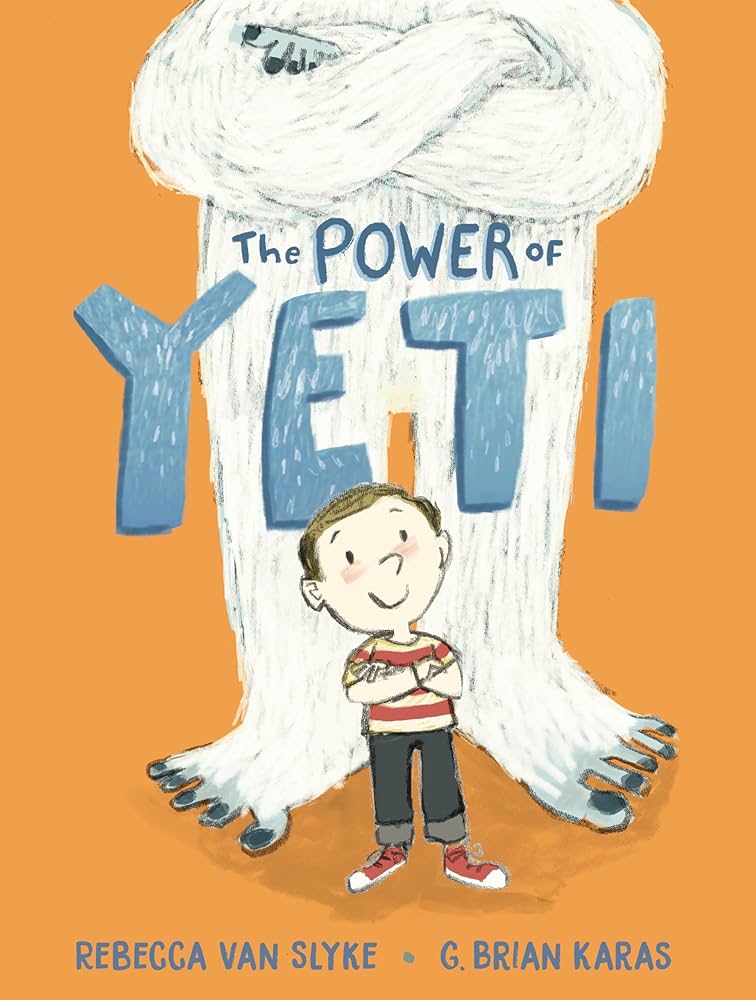SEL Read Aloud: The Power of Yeti by Rebecca Van Slake

Summary
Comprehension Questions
Six questions aligned to Bloom’s taxonomy for teacher’s to evaluate students’ comprehension
- Remembering: What does the Yeti tell the boy to say instead of “I can’t”?
- Understanding: How does the boy feel when he can’t tie his shoes or score a goal at the beginning of the story?
- Applying: If you had the “power of Yeti,” how would you use it to help you with something you find difficult?
- Analyzing: What are the key differences between the Yeti and the boy, and how do they help each other?
- Evaluating: How effective is the Yeti’s advice in helping the boy believe in himself? Give examples from the story.
- Creating: Imagine you meet a Yeti like the boy did. Write a short story about a new challenge the Yeti helps you overcome and how you feel afterward.
CASEL Discussion Questions
Five questions aligned to the CASEL competencies for teachers to foster an engaging discussion and foster social-emotional learning
- Self-Awareness: How did the boy’s feelings about himself change after the Yeti shared his power with him?
- Self-Management: What strategies did the boy use to stay determined when practicing how to tie his shoes or score a goal?
- Social Awareness: How did the Yeti understand the boy’s struggles, and how did he offer help that made the boy feel supported?
- Relationship Skills: What did the Yeti do to build a trusting relationship with the boy and encourage him to keep trying?
- Responsible Decision-Making: What other strategies could the boy have used to face his challenges, and what might have been the results of those choices?
Design Thinking Challenge
Take students’ learning even further by incorporating the Imagineerz design thinking framework
Design a Safe Haven for Swimmy and His Friends
Understand
- Begin by reading The Power of Yeti by Rebecca Van Slyke. Discuss the main challenges the boy faces, including his frustration when he can’t do things like tying his shoes or scoring a goal. Focus on how the Yeti’s encouragement helps the boy believe in himself and overcome his struggles.
- Initiate a class discussion on the book’s themes, such as perseverance, self-belief, and asking for help when needed. Explore questions like: What made the boy feel like he wasn’t good enough at the beginning of the story? How did using the “power of Yeti” change his outlook? How does the Yeti’s advice about practice and patience apply to everyday challenges?
Ideate
- Encourage students to brainstorm ideas for a “Power of Yeti” Adventure Park, where kids can practice skills they find difficult and build their confidence. Prompt them to think about areas of the park that would symbolize different parts of the boy’s journey, such as a shoelace-tying station, a soccer goal-scoring challenge, and a backward counting game.
- Ask students to think of features that could help visitors feel motivated and confident, such as interactive encouragement from a “Yeti” character, practice stations with step-by-step instructions, or rewards for completing tasks after persistent effort.
Prototype
- In small groups or individually, students will create a prototype of their “Power of Yeti” Adventure Park using classroom materials such as cardboard, clay, and markers. Their designs should reflect the boy’s journey of overcoming challenges with the Yeti’s help, and include multiple areas where visitors can practice skills while receiving positive encouragement.
- Encourage creativity in constructing the park, such as designing fun, visual ways to represent practice and progress (e.g., giant shoes to practice tying laces or a scoreboard to track goals). Include motivational signs or banners with quotes from the story, like “I can’t, Yeti!” to remind visitors to keep trying.
Test
- Students will present their adventure park prototypes to the class, explaining how each station is designed to help kids practice and build their confidence. They will demonstrate how visitors would navigate the park, using the “power of Yeti” to stay motivated.
- Gather feedback from classmates and teachers: Are the stations engaging and helpful for practicing different skills? Is the park fun and easy to navigate? What improvements could make the adventure park more motivational or better reflect the themes of the story?
Read Aloud
If you appreciated getting to read this book with your class, you might also want to share this book with them!
Additional Resources
Copyright Notice
The image on this page comes from the book The Power of Yeti by Rebecca Van Slyke. Copyright © 2023 by Rebecca Van Slyke.


